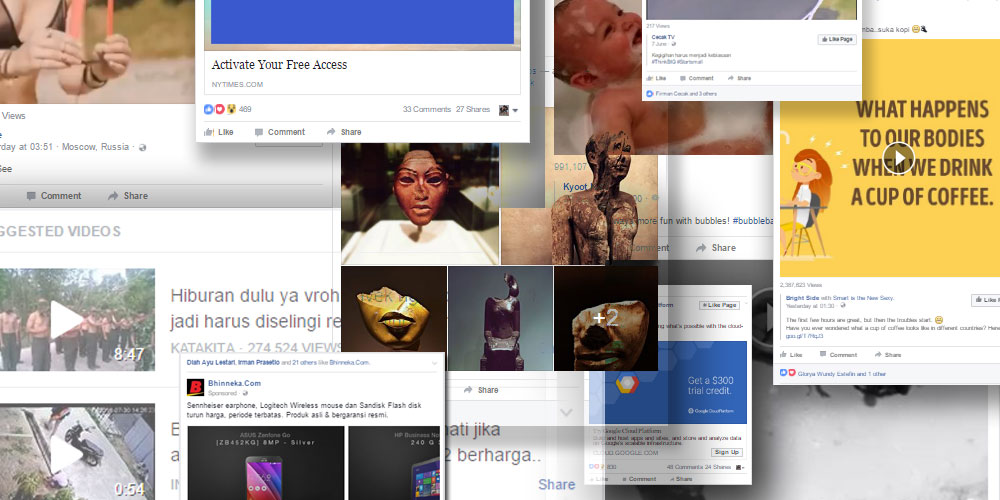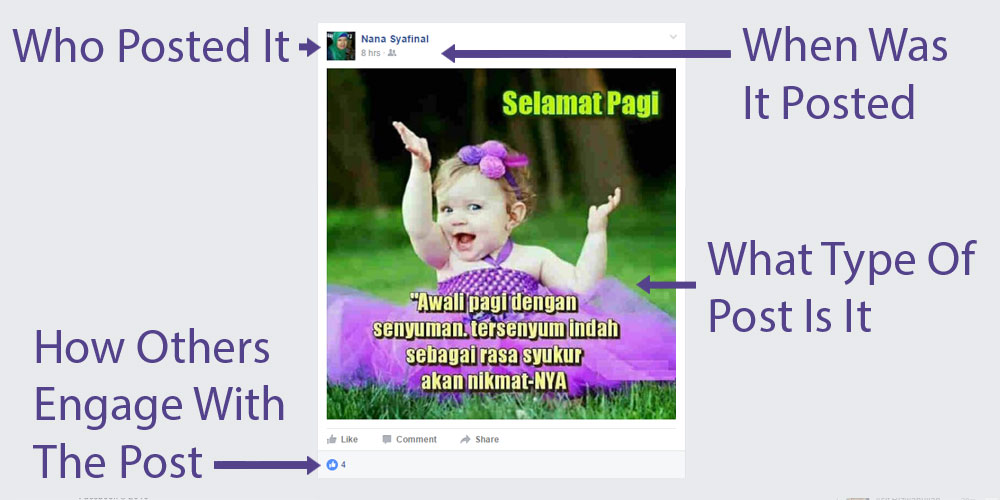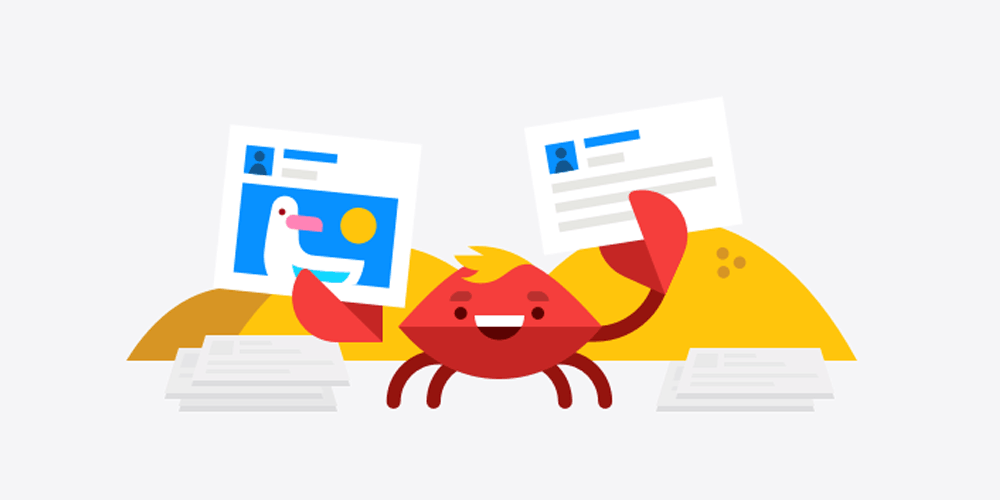Facebook is a giant on the web. Pretty much ruling the social media sphere, the social giant is indeed a place where most digital socialization takes place.
With massive amount of users, Facebook's "main attraction" is its News Feed. The endless stream of updates, shares (and ads), are what makes this particular feature engaging and interesting. While most of Facebook users use Facebook as it is, there are many people who are curious about how this News Feed thingy works.
News Feed is probably the most seen Facebook feature. As Facebook knows that the feature catches a lot of eyes, in order to leverage engagement and increasing the time users want to spend on it, Facebook puts things it sees fit upfront and the rest down below.
About how the Facebook manages its algorithms to order the list in the News Feed, the answer is constantly changing. The reason for this is because users' habits change.
But any updates Facebook introduces, is always in line with its goal. So to know how its News Feed works, we must first know its goal.
News Feed's Goal With An Objective To Please

Algorithms work in mysterious ways, but they aren't at all magic. For Facebook, algorithms are meant to automate the filtering, ordering and managing process. With practically more users than any other web services out there, billions of posts are created a day. Facebook needs something to manage all those, all in a fraction of a second.
News Feed has one main objective, and that is to please its users. Each and every Facebook user has different taste of News Feed, and that happens because Facebook wants the most relevant and engaging stories to appear on the list. Like previously said, Facebook has a lot of contents, and it wants to choose the best contents out of the many potential stories, unique and personalized for each person.
First of all, Facebook's News Feed prioritizes stories that users will Like, comment on, share, click, spend time reading. The more time users spend on Facebook, the more they'll engage with its contents.
The more engaging the content, the more users will come back to Facebook, the better the business will be for Facebook that has a mission to connect people while earning revenue from ads it shows in News Feed.
But getting that high engagement is difficult, even for Facebook. For that reason, Facebook needs a lot of data to know what users actually want. The data consists, and not limited to: Likes, Pages followed, friend relationship to another, how often users engage to a friends' post and profile, data users have included on their profile, cookies, age and demography, and so forth.
With the data, News Feed then ranks stories and posts in order of importance. From the big things close friends/siblings/family have shared, to articles that friends have posted. Then comes the average links shared by brands that users have engaged with, followed by "boring" stories from friends that "aren't actually your friends."
The list then continues, repeating itself in an endless feed according to engagement, importance and time.
Competing For Reach

Facebook has a lot of users that are active in making the social media rotate around its own core. Having more users engagement means further more posts created and shared. Over time, contents Facebook has to give to users overflow, and the competition tightens.
While Facebook users increased in numbers and the time they spend on News Feed also increased, viewership has not grown as fast as the amount of contents Facebook has.
News Feed is an endless list of contents. But Facebook knows that users don't want to scroll into the bottomless News Feed pit on their quest for finding friends' updates. The News Feed, while indeed endless, has a limited space. For that reason, Facebook needs to prioritize what's important, then show what's less important, to then eliminate what's not important.
The result for Facebook in not showing specific posts from specific people is a decline in their reach.
This is an inevitable outcome of people sharing too frequently.
But still, between those posts, no matter how good or bad they are, Facebook inserts some of its ads. To be on those spots, advertisers need to pay to get those many eyes' attention with ease. How about organic reach? How can they compete for such limited space?
Rather than competing to reach the top, knowing how Facebook manages its News Feed is to learn what it's algorithms prefer.
How The News Feed Works

Facebook has the users complete with their data, and their shared contents to show. Now comes to how the News Feed sorts them all (or some of them) out.
First, the News Feed assigns each story a personalized relevancy score that's different from one person to another. To come up with the score, the algorithms take account thousands of different signals. Among those many inputs, below is six of the main factors:
Who Posted It: The more a user interacts, visit and engage with a person's post, the more Facebook will think that the user is interested for more from that person in the future. Interactions and engagements include: Liking, commenting, clicking, spending time reading, visiting his/her Profile, tagged or being tagged by him/her and others. The less you interact with a person in a longer period, the lower Facebook will score that person to that user.
How Others Engage With The Post: The more of a user's friends engage with a post, the more likely that Facebook will show that post to that user. The reason for this is the same as the above: it thinks that the user will be interested by it.
What Type Of Post Is it: Users may engage with a certain type of post more than other types. For example, clicking on photos more than videos. Facebook will show more of that type of posts, relevant to who posted it and how other have engaged with it. Different people have different taste in Facebook's type of post. Here, Facebook wants to show the type of post the user is more interested in.
When Was It Posted: More recent stories will have a higher score. However, if a user hasn't checked the News Feed for a period of time, Facebook will rank older but good posts, higher up. For example: the more frequent the user visits the News Feed, Facebook will prioritize very recent posts. A week away from Facebook, the News Feed will show some posts it thinks will interest the user while he/she was away that week.
How Many Others Have Posted the Same Thing: This is to clean clutters. If more than a friend posted a same post, the News Feed will show the number of other friends who have shared the post rather than showing them altogether. This post will rank higher up because many of the user's friends are posting it.
New Facebook Products: When Facebook releases a new product, the company needs to test it to see how users will interact with it. Facebook will put this new product higher up, and slowly lowering its position on the user's News Feed as feedback is received. At the same time, Facebook will also see how this new product appeals the user. If it thinks that the user likes it, it will keep a high visibility. If not, it will put it further down.
Those six above influences certain posts to show higher up or lower down on the News Feed. The more a user use Facebook, the more it will learn about his/her interest. So everything the News Feed has to give, is based on the user's behavior. And because people can change, News Feed can alter itself and reorder the position of stories when it sees necessary.
Facebook's Advertisements On News Feed

Facebook needs to make money, and the things that its good at is by showing advertising. To do this on the News Feed, Facebook injects its ads between feeds, pushing what are shown below a space down.
To show which ads to appear, Facebook uses other but similar algorithms. What the ads' algorithms do, is to determine which Page or business' ads a user will likely be interested in. Facebook limits the number of ads users can see in order to maximize experience, lowering clutter, and keeping native ads, native. This reason forces Facebook to show the most relevant ads so a user will click.
The more Facebook knows about a user, the more relevant the ads will be. Completing bio details, Liking pages and others will give Facebook the data it needs to show more personalized and relevant ads about products, apps, and others that the user is interested in.
But here Facebook isn't trying to be egoistical. The social media gives users both implicit and explicit ways to teach the News Feed. For example: users can directly tell the News Feed which story they want and don't want. to see. Every story has a little drop-down arrow in the top right corner that lets users: hide, unfollow, save, report and give notification to.